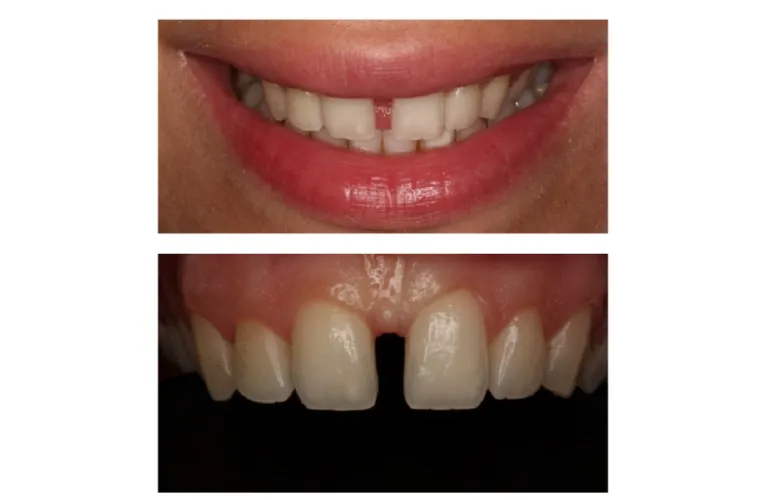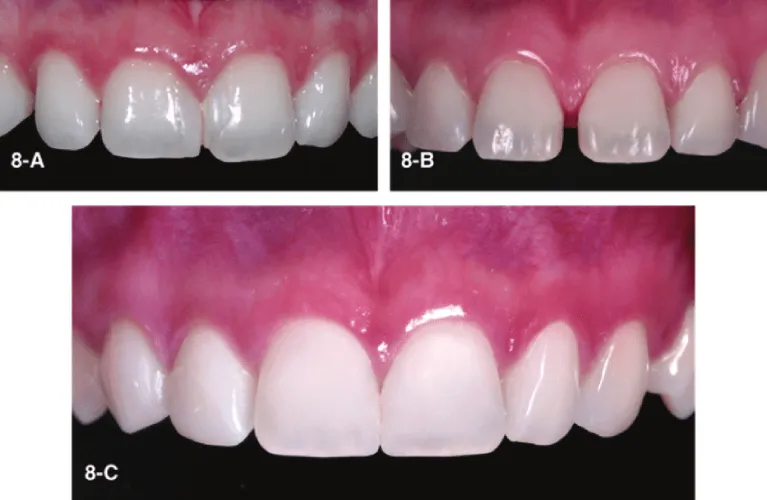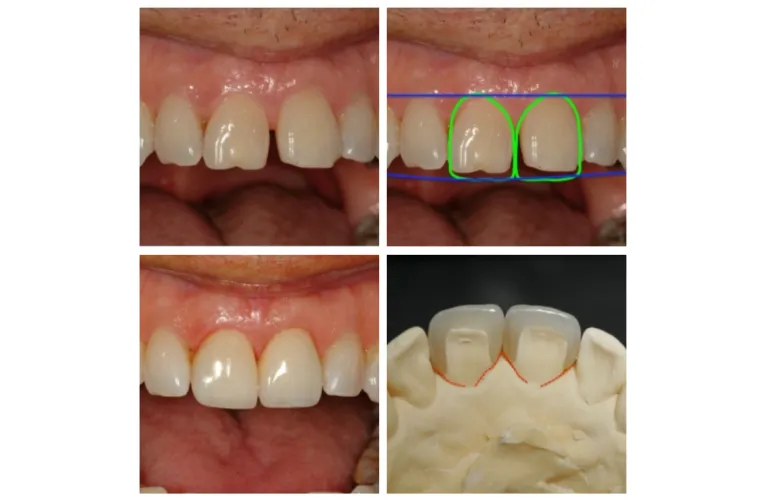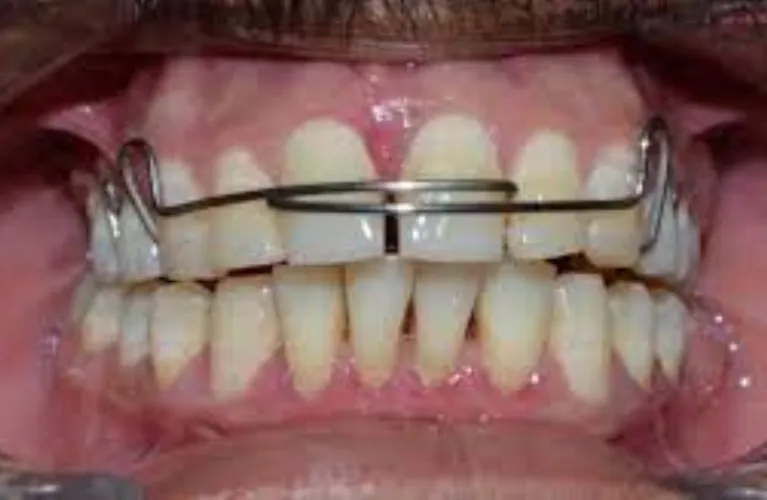Midline Gap | Midline Diastema | Gap Between Teeth: Causes, treatment, and prevention | Aries Oro-Facial Dental | Vadodara
Midline Gap or Midline Diastema means gap between teeth. They aren’t harmful, and they appear at both young and older. The last gap between teeth closes with the passing of a child’s tooth.


What Causes Midline Gap | Midline Diastema ? | Gap Between Teeth Treatment
Symptoms are usually based on a gap between the fronts and the back of the bottom jaw bone. This happens between ages 6 and 8 years old. But these gaps disappear almost always by creating higher animals.
Unless your person’s teeth affects or person’s teeth shape or size are unique, your chances of a smile forming grow. These teeth do not receive sufficient force or support to avoid drifting apart.
A typical case of missing tooth is underdeveloped and missing upper front teeth. They were formerly dubbed two upper front teeth and lateral, two upper lateral incisors, two upper front teeth and two upper lateral incisors put together. It can cause gaping teeth.
Causes Of Midline Gap | Midline Diastema - | Gap Between Teeth Treatment
Diastema refers to a gap or space between two teeth, most commonly seen between the two upper front teeth below. There can be several causes for diastema, including:
Genetics:
In some cases, diastema may be an inherited trait. It can be influenced by the size and shape of teeth, as well as the size and alignment of the upper jaw-bone.
Oversized labial frenum:
The labial frenum is the tissue that connects the inside of the upper lip to upper front teeth and affects the gum line and tissue between the two front teeth. If excess tissue in this frenum is too large or excess tissue extends with too much pressure too far down, it can create a gap between the upper front teeth below.


Tooth size and spacing:
Discrepancies in the size of teeth or the amount of space available in between teeth affects the upper jaw can lead to diastema. If the teeth are smaller in proportion to the jaw, gaps may occur. Similarly, if there is too much pressure or excessive spacing between teeth, it can result in diastema.
Thumb sucking or tongue thrusting bad habits:
Prolonged thumb sucking or tongue thrusting bad habits can put pressure on the front teeth, pushing them forward and creating gaps between them.

Missing tooth, cracked or chipped tooth, undersized teeth:
When there are missing teeth or undersized teeth, neighboring teeth may shift and create spaces. cracked or chipped tooth loss: Cracked tooth loss, or chipped tooth also may create this.
Periodontal disease:
In some cases, gum disease or periodontal Disease can lead to bone loss and tooth movement, resulting in diastema

Incorrect or not learning proper swallowing reflexes:
An incorrect learning proper swallowing reflexes pattern, where the whole tongue presses or pushes against the the upper lip and front teeth, instead of the whole tongue presses the gum line or roof of the mouth, can contribute to the development of diastema.
Midline Diastema | Midline Gap Treatment IN Vadodara | Gap Between Teeth Treatment In Vadodara
Diastema is a gap often treated by placing stress on the tooth so that it is closer together. You will be required to have complete braces if you just have 1-2 gaps. Veneers are small sheets of porcelain that are pressed into your teeth. The procedure is tailored to each individual.

Frenectomy
If an oversized labial frenum is causing the gap teeth, surgery — known as a frenectomy — can reduce the gap between teeth teeth and the frenum’s size. When a younger child has a frenectomy, the diastema is a gap between baby teeth that may close on its own. However, an older child or an adult may still need the gap teeth closed with braces.
Scaling and Root Planning
It may require Scaling and root planing to remove hardened plaque as well as tissue regeneration procedure to restore bone health , afterwards practicing good oral hygiene will be enough.
Dental Bonding | Tooth coloured Filling :
Dental bonding is a procedure where a tooth-colored resin material is applied to the teeth to close the gap. The resin is shaped and hardened, creating a natural-looking result. This is a non-invasive and relatively quick procedure.


Dental Veneers
Veneers are thin porcelain or composite shells that are custom-made and bonded to the front surface of the teeth. They can be used to close gaps and improve the overall appearance of teeth. Veneers require some enamel removal and are a long-lasting solution.
Orthodontic Treatment:
For larger or more complex diastemas, orthodontic treatment may be recommended. Traditional braces or clear aligners, such as Invisalign, can gradually shift the teeth into proper alignment, closing the gap over time.
Dental Crowns:
Crowns are tooth-shaped caps that cover the entire tooth. In some cases, if the diastema is caused by disproportionately small teeth, crowns may be used to close the gap by increasing the size of the affected teeth.
Dental Implants or Dental Bridges:
If the diastema is caused by missing teeth, then dental bridge for primary teeth, dental implants for loose teeth, or bridges or permanent teeth can be considered.
Implants dental bridge for primary teeth involve the surgical placement of artificial tooth roots, while bridges dental implant for loose teeth involve bone and use adjacent teeth as support to fill the gap.
Retainers or Dental Bands:
In some cases, especially for children with diastema due to oral habits like thumb sucking, dentists may recommend the use of retainers or dental bands to guide the baby teeth into proper alignment and close the gap.

FAQ
Are diastemas genetic?
Like many dental features, diastem is heritable, mainly refers to gaps greater than 1.5mm. This gap is considered part of healthy dental growth in children under 12 years of age. In inherited cases this will likely persist until the adulthood.
What are the benefits of a diastema?
Benefits of Diastem Closing. Improves appearance: A better appearance can provide immediate benefits after this procedure.
Changing the gap between permanent teeth grow the smile and lips will help boost confidence levels. Diastema can contaminate your oral system causing cavities and gum diseases.
Is diastema rare?
Diastema means a large gap between teeth. Diastema is quite common, and people like to have gaps gap gap between teeth or on their mouth.
What is dental bonding for diastema closure?
Diastema bonding is the technique dental implant of applying composite resin onto teeth to repair gaps in the front teeth. The dentist uses bonding for a variety of problems such gap in front teeth as uneven spaced, misaligned, cracked or broken teeth.
Is diastema a deformity?
Diastema is an acronym that describes an oral gap involve bone, and does not mean any disease or deformity in bone or that oral health or bone health, in any way.
The problem advanced gum disease varies also by severe gum disease treatment options and can cause confusion for the patients.
What is the best treatment for diastema?
Treatment options for Diastemas Dental bonding.
Can diastema be fixed naturally?
When a child is growing their size increases creating gaps permanent teeth gap filling. When a new tooth is introduced small gaps close and the permanent teeth grow again with teeth gap filling more easily.
Remember, there is no golden rule for tooth or jaw bone loss or gum disease. Often gaps do not disappear and therefore require orthodontic and treatment options.

